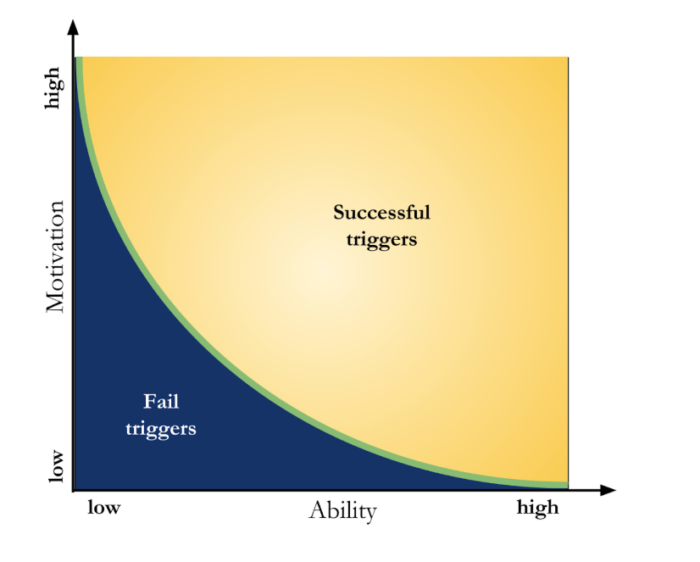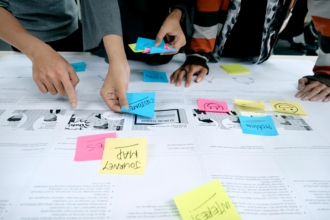A few months ago, someone asked me how easy it is to cultivate long-lasting behavior change, and if it isn’t easy, how do you go about achieving it?
Long-lasting behavior change isn’t easy, but it is possible, especially if you use the science of habits.
Let’s get started learning how your good habits can help you.
The benefits of behavior change
Positivity
The first and foremost benefit of initiating a long-lasting behavior change is developing positivity.
To change a behavior, you must come up with good habits. These good habits will bring about positive changes that make you feel happy and fulfilled.
Increased self-confidence
Positivity brings greater self-confidence, which in turn makes more things seem possible.
You can start visualizing achieving your targets, goals, and dreams. When you visualize such things regularly, you have a greater chance of achieving them.
Higher productivity
When you have higher self-confidence, you start working with an increased level of energy and determination.
Your positivity and self-confidence inspire you to work toward achieving your goals and stay focused on whatever task you attempt.
Improved mood
What do positivity, greater self-confidence, and higher productivity lead to? A better mood. And when you have a better mood, it’s easier to be happy and healthy.
Better memory skills
The habits that you develop when cultivating a long-lasting behavior change will help sharpen your memory.
For example, say you begin using a daily planner. The planner will help you remember what tasks you need to finish each day. By cultivating this habit, you will start to remember your daily tasks without checking your planner.
Your sharpened memory skills will, in turn, improve your focus.
What are the theories behind behavior change?
The factors that influence behavior change are personal, environmental, and behavioral. When embarking on your behavior change, it’s helpful to understand some prominent behavior change theories.
Self-efficacy
How much do you trust in your ability to complete a certain task? The answer to this question defines your self-efficacy. Your ability to perform the task depends, in part, on your past experience of success or failure.
Self-efficacy helps you predict how much effort it takes to initiate and maintain the behavior change you want based on your past experience.
Learning theories
According to learning theories, you need to imitate and reinforce the behaviors that you want to develop. When these behaviors are complex, practice by adopting a few simpler behaviors.
Social learning theories
Your environment also affects behavioral change. If your surroundings do not help you stay focused, they aren’t going to help you cultivate the long-lasting behavior change you want. To achieve your behavior change, design your environment to support you.
Theory of reasoned action
Intention is the key to this theory. Everyone has assumptions based on their perception of a behavior and on society’s perception of that behavior. The nature of these assumptions determines intention, which is necessary for behavior change.
Theory of planned behavior
This theory builds upon the theory of reasoned action. Sometimes you may not be in control of all the factors affecting a behavior, or you may not think you are in control. The more perceived control you have, the better able you will be to achieve behavior change. As with the theory of reasoned action, intention is paramount.
Transtheoretical model
The transtheoretical model of behavior change consists of a five-step process:
- Precontemplation: you have not yet decided to change behavior
- Contemplation: you are considering making a change
- Preparation for action: you start planning to change a behavior
- Action: you exhibit a new behavior consistently
- Maintenance: you maintain the new behavior consistently, say, for six months
In this change theory, the chances are higher that you quit the behavior change even after getting to the maintenance stage.
Health action process approach
The health action process approach for behavior change is a combination of two processes:
- Goal-setting phase (motivation)
- Goal-pursuit phase (volition)
The motivation phase consists of your intention to cultivate the behavior. Volition consists of how much effort you put into achieving the behavior change and how long you keep trying.
Fogg behavior model
Developed by DJ Fogg, the Fogg Behavior Model is made up of three factors: motivation, ability, and triggers.
You need to be motivated enough to change the behavior, you must be able to exhibit the new behavior, and you need triggers to prompt you to perform the behavior.
What are the habits that you need for a long-lasting behavior change?
As I said earlier, behavior change requires good habits.
Here are a few habits essential to success:
Wake up early
Waking up early is one of the habits that many successful people have.
Prioritize
You also need to learn how to prioritize. I have heard people say, “I am busy; I don’t have time.” But it’s not that a person doesn’t have time. It’s that the task in question isn’t a priority.
If you want long-lasting behavior change, make a habit of prioritizing the tasks you need to complete to achieve your goals.
Read
Holly Johnson explains why reading can help you become successful:
- Reading a well-written story lowers your stress levels by transporting you to another world.
- As per the National Sleep Foundation, regular reading can help your body prepare for sleep.
- Reading what your idols have read will expose you to the people and ideas that shaped them.
- Reading makes you more empathetic.
- You improve your critical-thinking and decision-making skills when you read.
- Reading makes you smarter by boosting your vocabulary and general knowledge.
- Per award-winning novelist, Keith Oatley, reading improves your emotional intelligence.
Exercise
A very important habit you need to cultivate is exercising regularly.
Beyond the health benefits, exercise can actually improve your work performance and your ability to achieve your goals. How? Regular exercise reduces stress and improves your mood. As you achieve your fitness goals, your confidence may also increase. All three of these benefits will help you bring about long-lasting behavior change.
Don’t talk negatively
If you want to cultivate long-lasting behavior change, you need to stop thinking and talking negatively.
How do you cultivate such habits?
The last step is to learn to cultivate the habits mentioned above for a long-lasting behavioral change. Here are a few ways to do that.
Come up with a stable, supportive environment
As discussed in the social learning theory, your environment and surroundings matter when it comes to achieving a long-lasting behavior change.
You need to plan for and come up with a stable, supportive environment. Everyone and everything around you should motivate you to achieve this change.
Leverage the natural opportunities available to you
Sometimes, there are natural opportunities for cultivating behavior change.
If one of your goals is to read more, and you commute on public transportation, take advantage of that commute time to read. Does the noise from your fellow passengers make it difficult to concentrate? Bring a pair of noise-canceling headphones with you.
Likewise, if your goal is to expand your professional network, and someone who you respect sits near you at work, try making friends with them by saying hello each day.
Take advantage of those opportunities.
Make it as easy as possible
Use methods, such as habit stacking, to increase the likelihood of adopting a long-lasting behavior change.
Habit stacking increases your chances of sticking with a habit by stacking your new behavior on top of an old one. This process can be repeated to chain numerous habits together, each one acting as a cue for the next.
Use cues and rewards
Changing a behavior can be daunting. But if you can identify the routine involved in the behavior you want to change, you can experiment with different rewards to get to the route of the behavior. Once you’ve done this, you can isolate the cues that lead to the “bad” behavior and come up with a plan for changing it.
Practice
Another thing that can help you with long-lasting behavior change is practice. Make a habit of practicing the new behavior.
Work on motivation
Motivating yourself is quite challenging, but it’s necessary.
One way to maintain motivation is to use the Goldilocks Rule, which contends that people feel highly motivated when they are working on tasks that are neither too hard nor too easy. Once you’ve mastered a task, add something to it to increase the challenge a bit.
Don’t forget to appreciate yourself for working toward your goals consistently. You can ask your family or friends to help keep you motivated as well.
Become successful with long-lasting behavior change
Cultivating long-lasting behavior change is difficult but not impossible, especially with knowledge of behavior change theories and tips on developing good habits. Give it a try. It’s the only way to see success.















Send Comment: